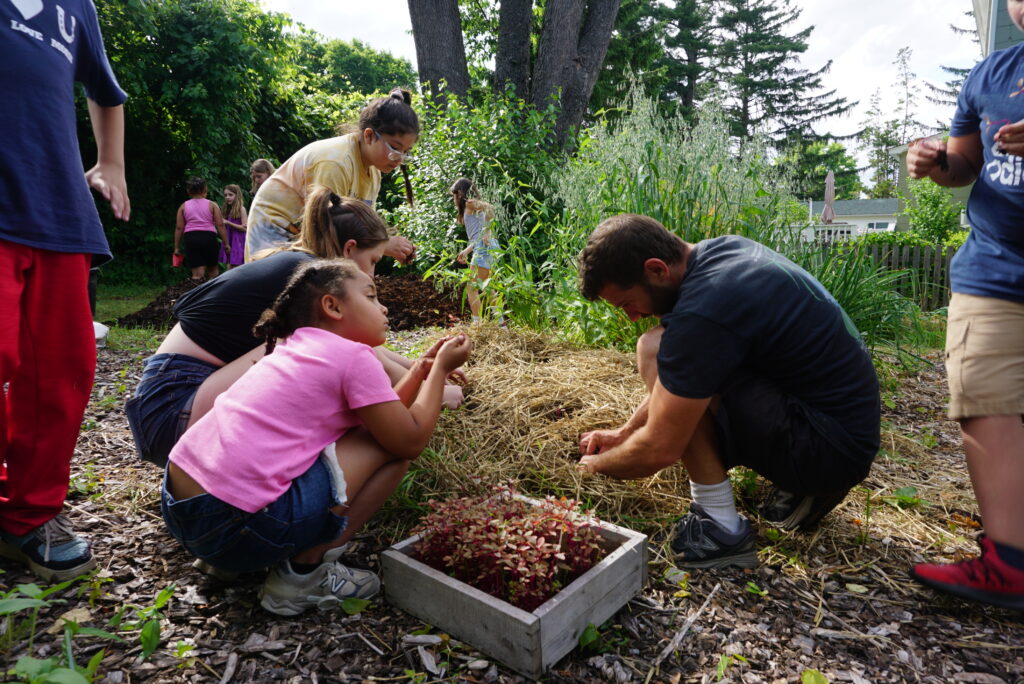
How can we provide healthy food to everyone in our community?
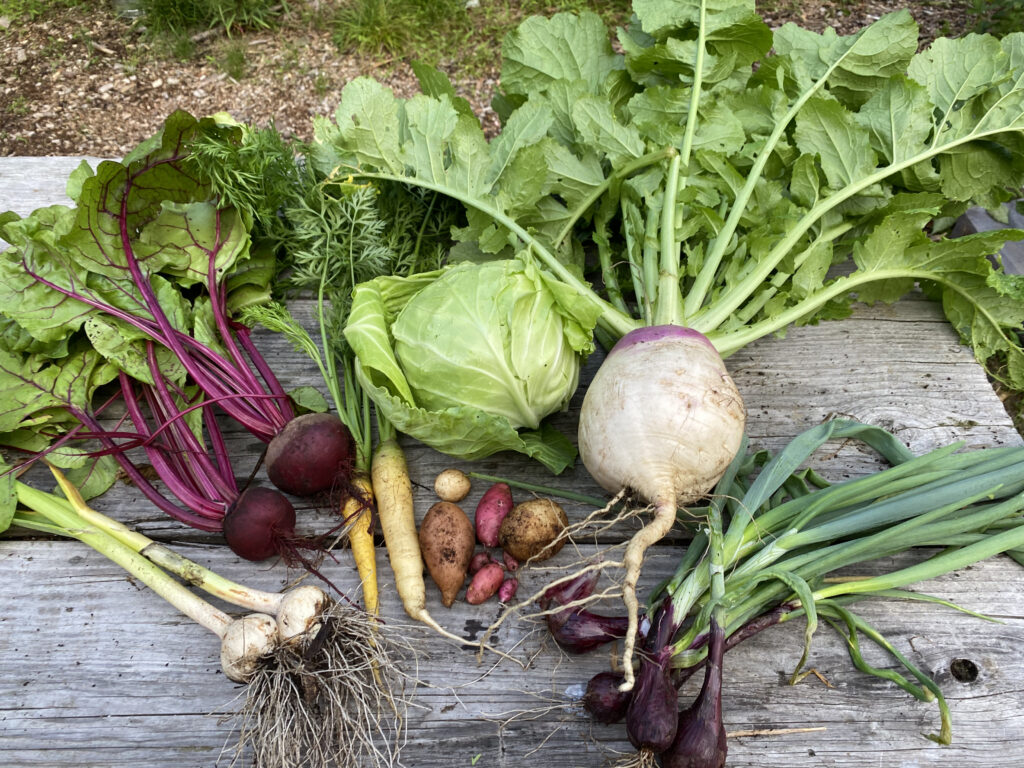
According to the USDA, food security means access by all people at all times to a enough food for an active and healthy life. Communities exercising their right to grow, sell, and eat fresh, nutritious, affordable, culturally-appropriate, and locally-grown food with care for the well-being of the land, workers, and animals is food justice.
Achieving food security and food justice means more than just meeting caloric needs. Although many people in our communities are able to acquire enough food to feel full (many, but not all), it is extremely difficult for most people to gain access to a high-quality and diverse diet to support holistic health. This has led to a wide array of health problems, including obesity, cancer, and more. In the U.S., close to 75% of adults and 40% of children are overweight or obese. Industrial agricultural methods have led to a severe decline in the nutritional value of food, and the consumption of ultra-processed foods is at an all-time high. Additionally, pesticide exposure has been linked to cancer, neurological disorders, and many other diseases. Despite widespread awareness of these health impacts, many people do not have access to high-quality organic food (food grown without chemical pesticides and fertilizers) due to their exorbitantly high prices. This makes it especially difficult for people living in poverty to achieve food justice and security.
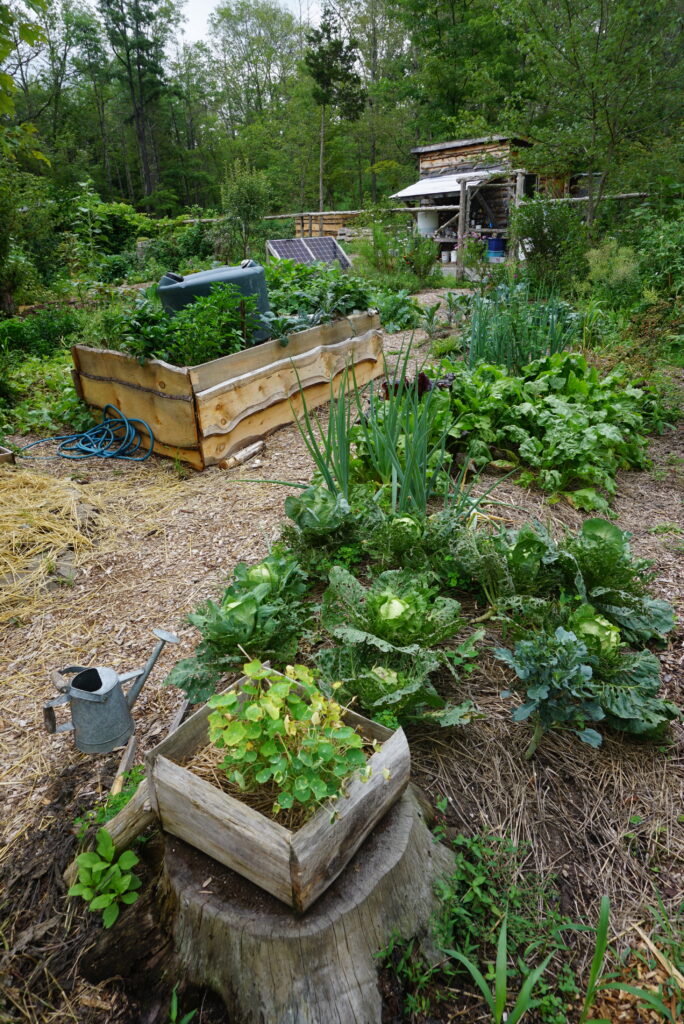
In addition to these health crises, multiple environmental and economic factors threaten the resiliency of our food system. Global water shortages, soil degradation, climate change, fossil fuel dependence, homogeneity in the food supply, and price setting are examples of issues that put industrial agriculture at risk of collapse. Although food access is something that will be more challenging for everyone in the future, these issues will affect those in poverty the most.
At the UGC, we believe that creating a resilient alternative to industrial agriculture is one of the most pressing issues of our time. We recognize the link between the health of the soil and human health: one cannot be healed without the other. It is not enough to create alternative organic markets that exclude anyone who cannot afford to buy them. We are pursuing food justice and security for all members of our community through our Saugerties Free Food Program.
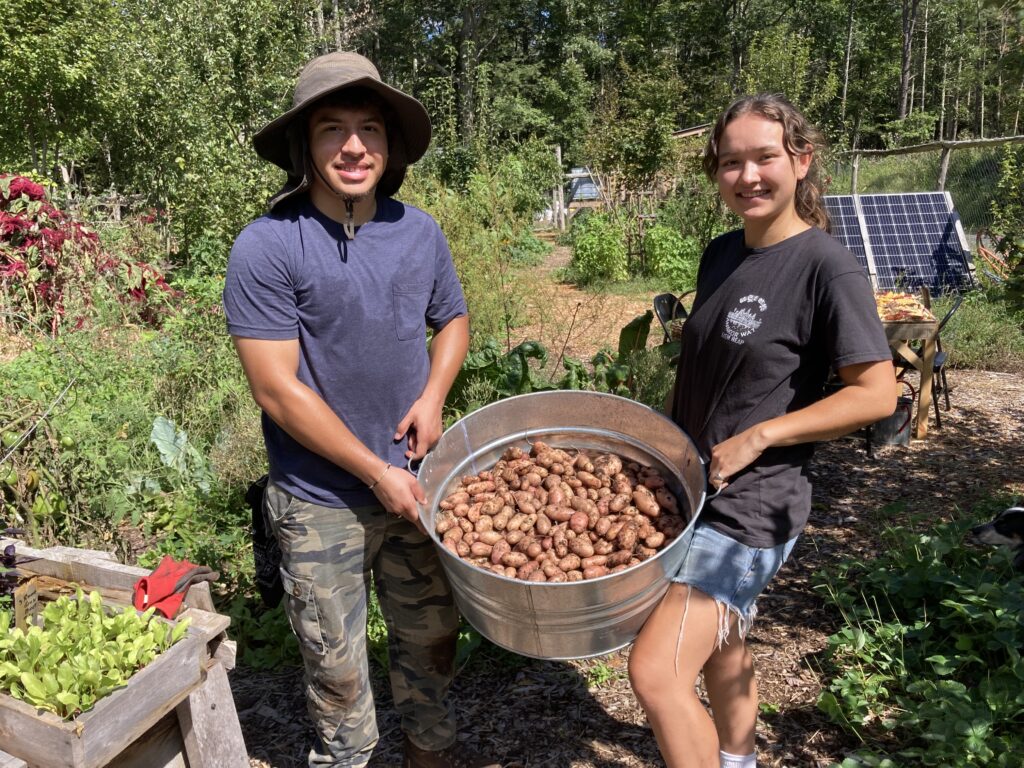
The Saugerties Free Food Program is a network of gardens that are overseen by The Underground Center (UGC). In our network, food is grown in a regenerative style which emphasizes the health and well-being of the soil while boosting the nutritional value and resiliency of our crops. All of the food that is grown is shared for free at the Saugerties Boys & Girls Club and with the people who grow the food. This project is designed to be an educational experience for the young people involved, and a model of how we can grow food locally and sustainably to ensure food security and food justice for all of our residents.
How it works
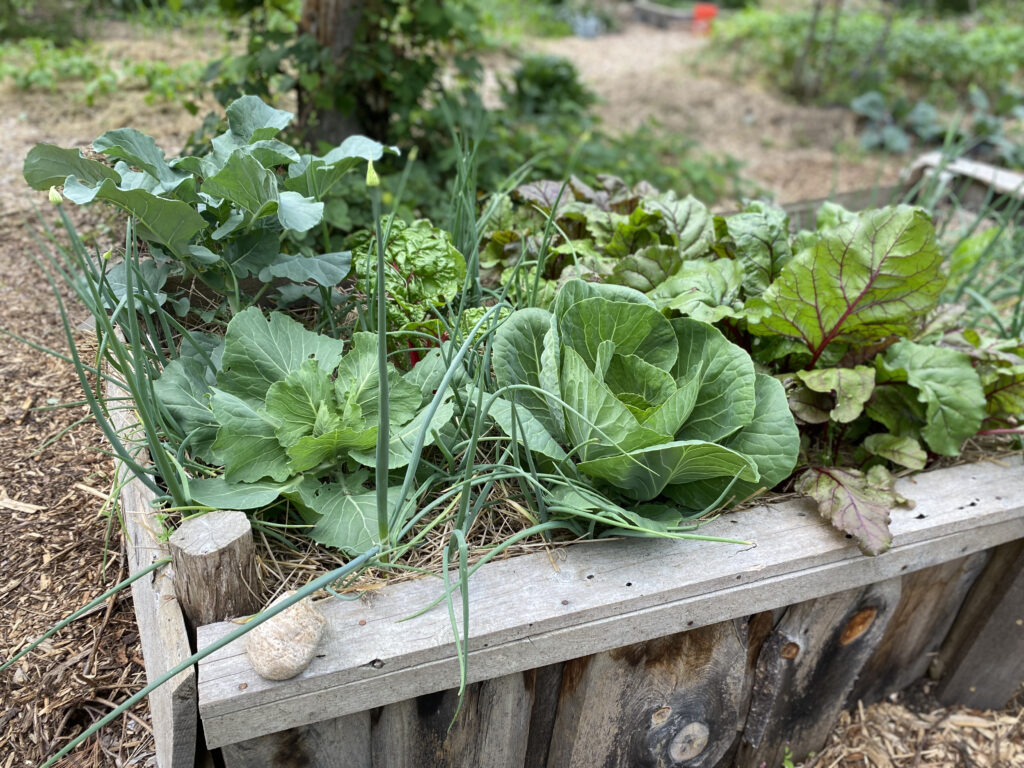
Our work is split between a community garden created from a previously empty lot in town (Re:seed Saugerties), an off-grid farm at the UGC site, and a network of “lawns to gardens” called the Sharing Garden Initiative throughout town. The staff, apprentices, and volunteers at the Underground Center collaborate with the Saugerties Boys & Girls Club to create and maintain these gardens. The people involved gain experience farming in various conditions and learn how to grow, harvest and cook a diverse and delicious local diet. As we share what we learn, this cooperative growing system can be adopted by homes and organizations in Saugerties as a viable alternative to our environmentally destructive and expensive commercial agriculture system.

In the Hudson Valley, most of the sustainable food initiatives are heavily influenced by commercial agriculture. Training programs, garden development and local investments focus on training commercial farmers or encouraging farms to share food through a charity model. We believe this model mainly helps the few farmers able to start a business and the wealthy customers that can buy the more expensive ethically grown local produce. In contrast, our goal is to work together with local youth and community members to create a network of gardens on local land to nourish soil, grow and share food for free. We believe this is the most viable way to provide food security to everyone in our community.
The goal of the Saugerties Free Food Program is to develop a local farming economy that doesn’t depend on exploitation and instead nourishes the people and land where we grow food. We are doing this in four ways:
- Educating people in Saugerties about food security, food justice and the value of healthy food.
- Training local youth and other community members to be leaders in building sustainable food infrastructure in Saugerties.
- Growing staple crops to share
- Collaborating with landowners to turn private lawns into shared subsistence gardens.
Education
One goal of this program to educate young people about food security, food justice and ways of growing food locally. The Boys & Girls Club members have already begun to see the value of local food through hands on experience in the garden throughout the year. This includes building soil, starting seeds, planting and caring for garden veggies, harvesting, processing and cooking. The kids are involved in every step of the process. By eating nutritious and healthy food, the kids learn the true value of local farming!
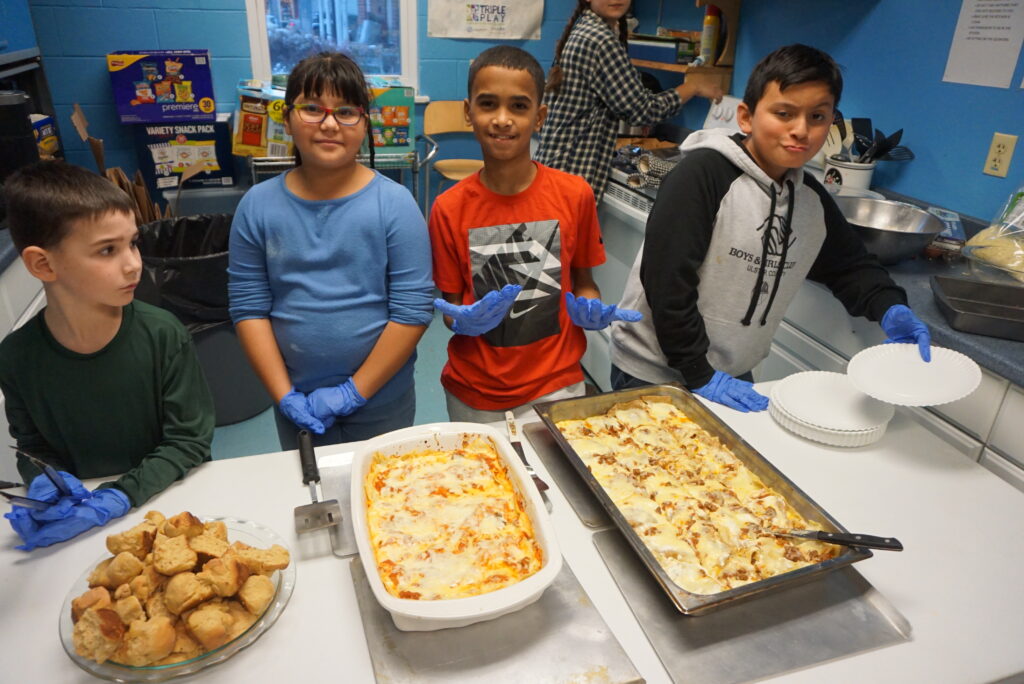
The garden itself serves as a model for neighbors and community members to see how a lawn in town can be turned into a garden that can meet all of our nutrition needs without chemicals, machines, or large sums of money. Also, through public school visits, community events and online publications, we share what we learn through our work to continually improve local food production.
Sharing Garden Initiative
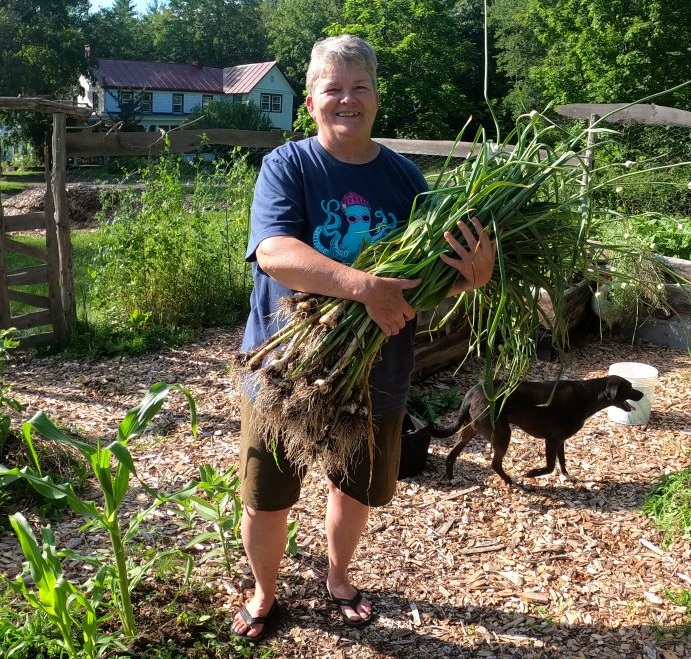
In addition to giving young people hands on farming skills, we promote sustainable land use through our Sharing Gardens. This program is a collaborative effort with local land owners. We work with people who have suitable lawns to transform them into productive gardens. Interns work with UGC staff to build garden beds to grow staples. In exchange for giving us access to their land, we provide a handmade raised bed for participating community members. This encourages people to start growing their own food and maintain growing space to share with members of the community.
Each garden provides growing space for food that is distributed to the Saugerties Boys & Girls Club. From these gardens, we harvest hundreds of pounds of staples like potatoes, sweet potatoes, corn, beans, amaranth, wheat, soybeans and squash to share.
Food production
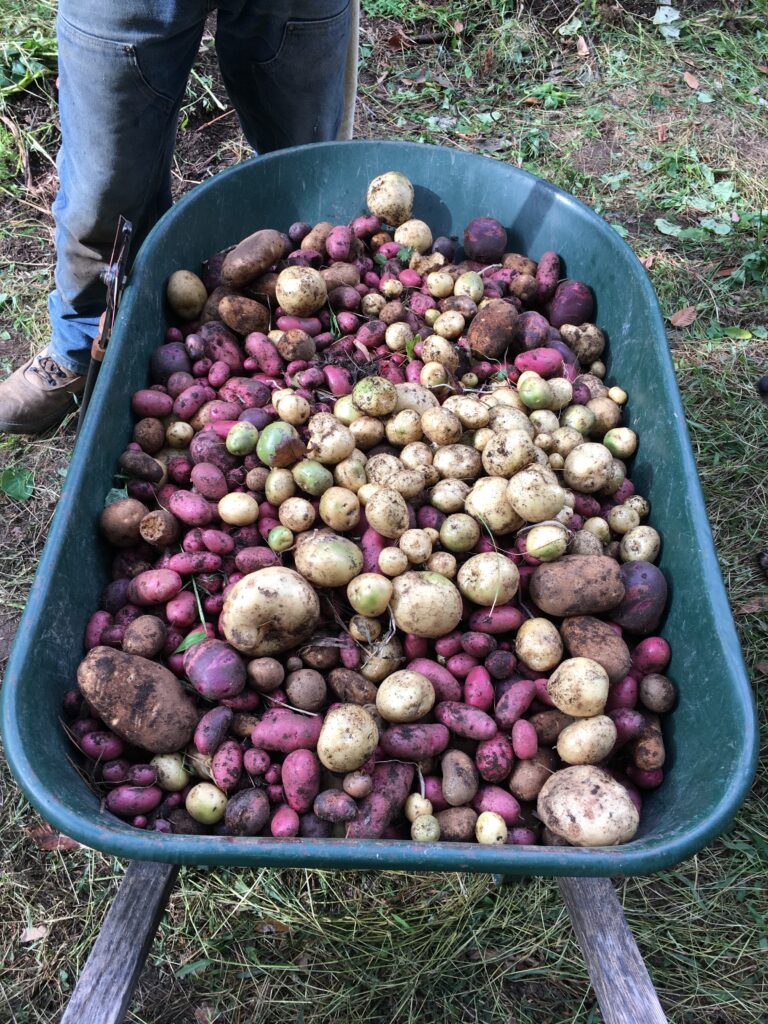
The gardens in the Saugerties Free Food Program grow food that makes up a local subsistence diet. Unlike commercial farms that grow “high value” produce for markets, we focus on staple crops and a diversity of vegetables that make a healthy and delicious diet. We grow in a way that can meet all of the food needs in our community without exploiting workers or the land.
All the food grown at the Re:seed garden and most of the produce from the other gardens that are part of the Saugerties Free Food Program is harvested and distributed or cooked for members Boys & Girls Club and their families. Additional produce goes to making meals for the interns, workers and family members that help manage the gardens.
Seed saving
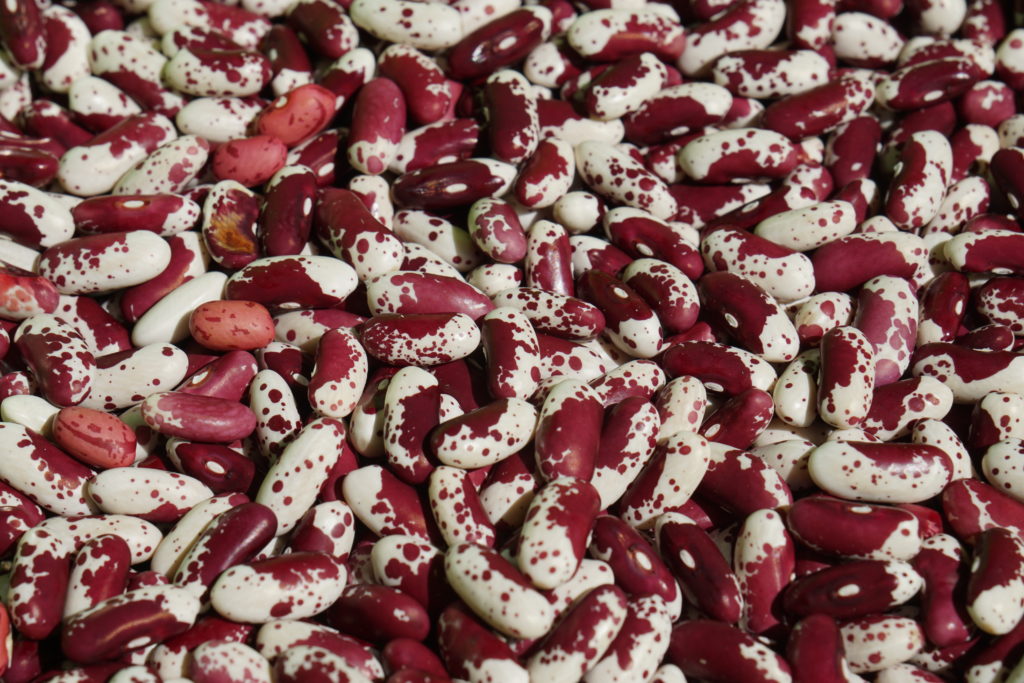
To make a resilient and sustainable food system, we need local seeds to replenish our gardens. Each year we set aside enough seed to replenish the gardens plus extra to expand our food network. As we include more participants in our Saugerties Free Food program, we will grow our seed bank and develop a seed stock adapted specifically to our climate.
Getting involved!
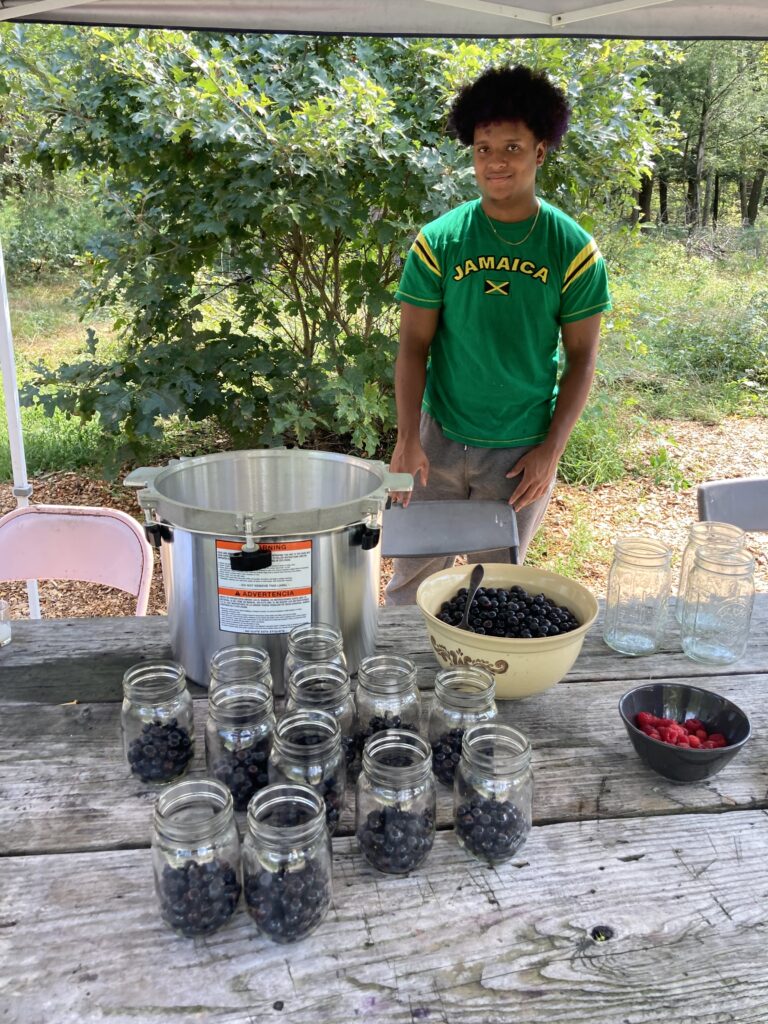
Another important goal of this program is to train people to be leaders in making our community more sustainable and just. We believe this is best done by teaching skills to people, demonstrating cooperative ways of working together and giving people responsibility for nurturing gardens.
This year we are offering a farm resident position, which is an educational work opportunity that takes place at Shagbark Farm. Additionally, we offer volunteer food processing days in the summer and fall where we process our crops into tasty food items like tomato sauce, hot sauce, pickles, sauerkraut, grape juice, and more. Most importantly, people can get involved by joining our growing team and helping us manage the sharing network that supports the Saugerties Free Food Program. To learn about more ways to get involved, check out this page for a full list of opportunities to support our work.
Future of the Saugerties Free Food Program
Our cooking program with the Boys & Girls club is a model of how we can feed our entire community. Currently, we feed the entire club one day a week, but over time we would like to increase this to five days a week. The beauty of this model is how easily it can scale up. The more people involved, the more land we transform into nourishing farms and the more free food is available to our community. One ambitious application of this model could be used to feed the entire school district and set the standard for transitioning away from the low quality expensive “food” that our tax dollars currently pay for. Collaborating with youth to transform local land into shared food infrastructure is the ultimate food security!
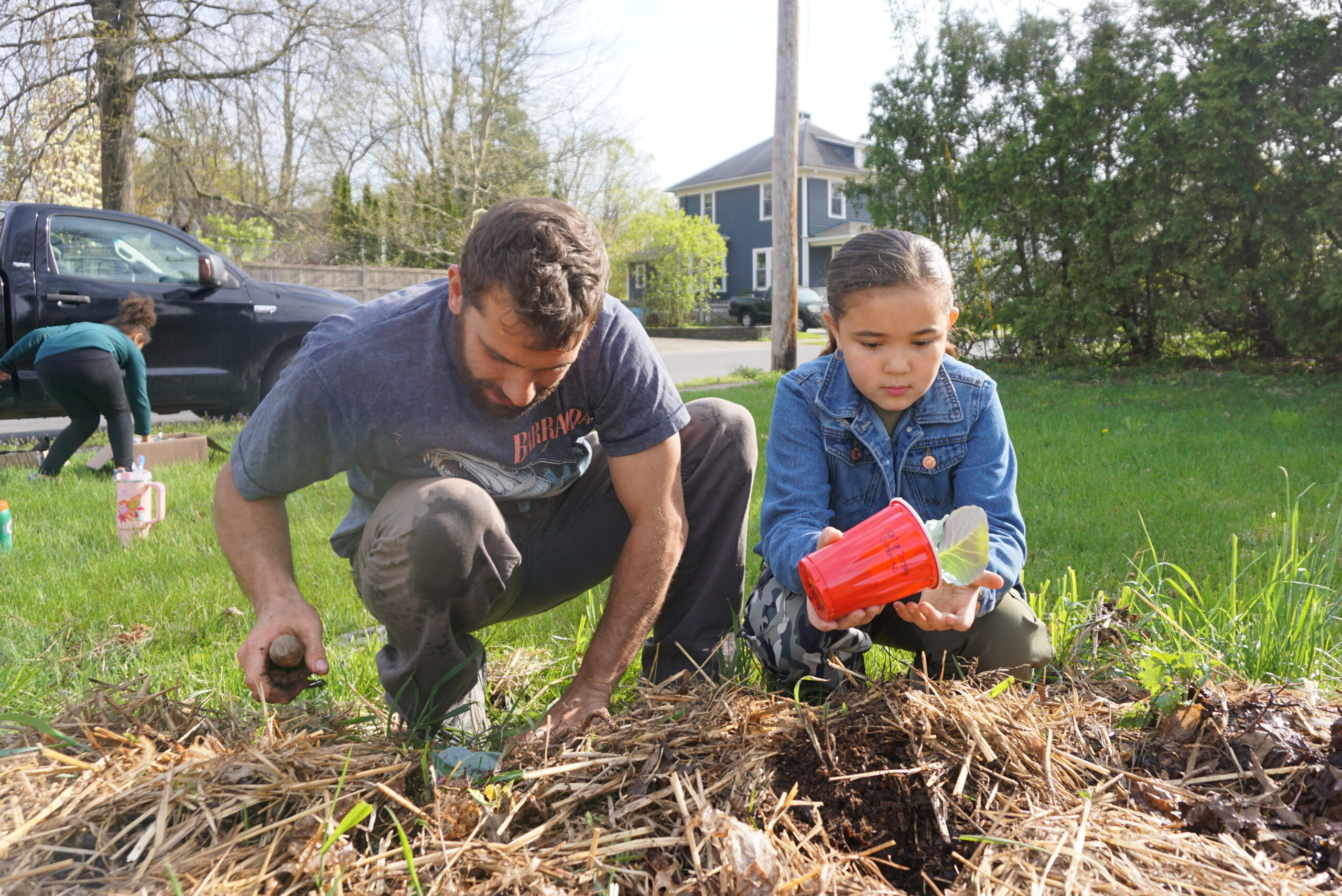
In the future, we hope that our apprentices and the young people that participate in this program will become leaders in a workforce to transition our local community into a more sustainable and just place. We believe it is possible to feed everyone in our community, regardless of their economic standing. The Saugerties Free Food Program will be a model for how we can feed everyone in our community healthy food without exploiting the land or the workers.